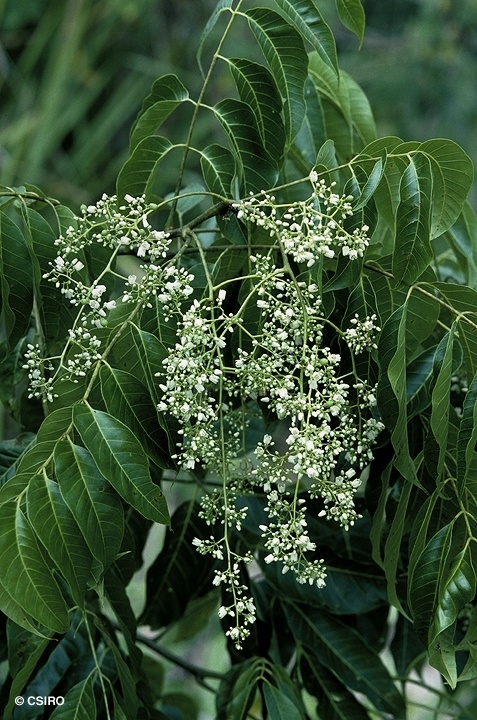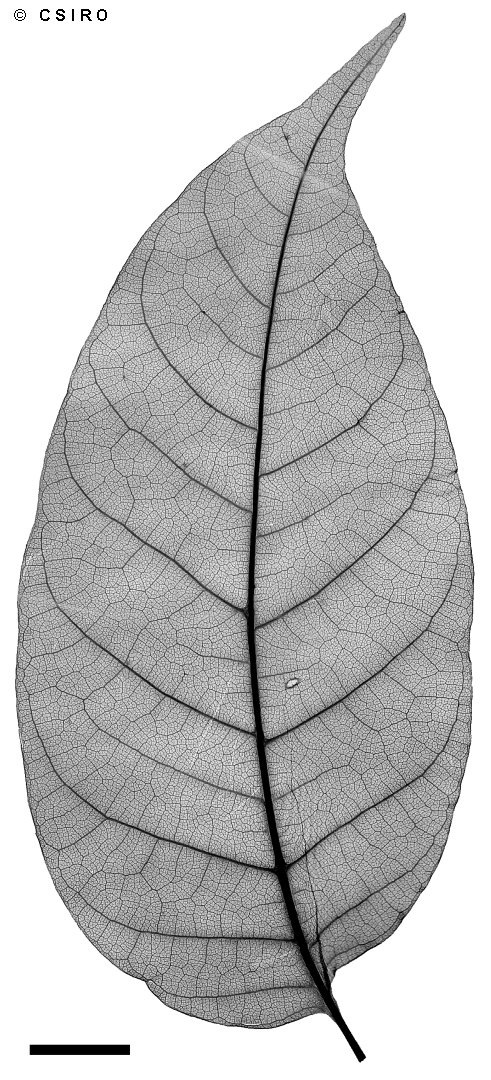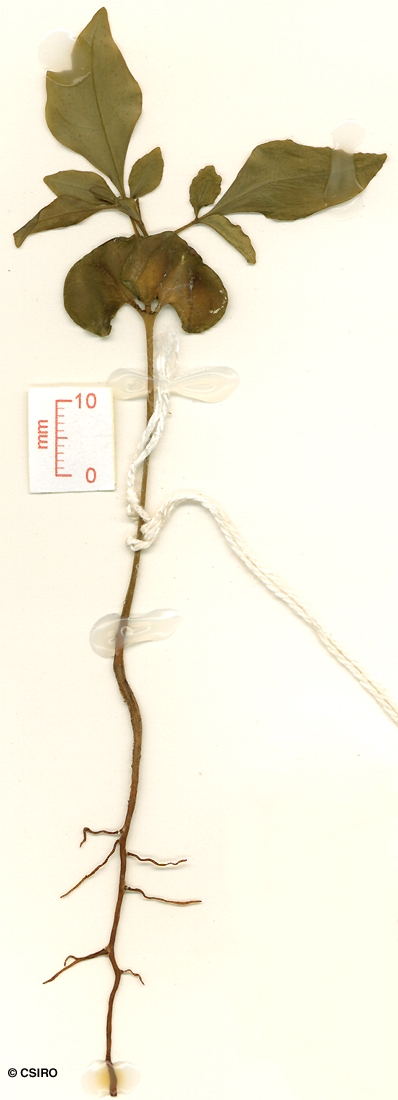Australian Tropical Rainforest Plants - Online edition
Toona ciliata M.Roem.







Roemer, M.J. (1846) Synops. Monogr. 1: 139. Type: Madras, India, W. Roxburgh in herb. Willd. 4828; holo: B-WILLD, iso: BM (6 Nov. 1799)? Fide Mabberley.
Cedar, Red; Cedar; Red Cedar
Deciduous; leafless for a period between June and August. Both blaze and wood have a faint but rather pleasant aroma (cigar box or incense).
Inflorescence often 30-40 cm long, approximating but seldom exceeding the leaves. Calyx lobes about 1 mm long. Petals about 3.5-4 x 3.5-4 mm. Staminal filaments hairy, about 1.5 mm long, inserted in the hairy, orange disk. Ovary base surrounded by the disk. Ovules about 6-10 per locule. Style short, stigma terminal, +/- peltate.
Fruits glabrous, about 15-20 mm long before dehiscing. Seeds winged at each end, seed (including the wings) about 12-15 x 3-4 mm. Embryo about 5 mm long. Cotyledons wider than the radicle.
Cotyledons elliptic, about 8-10 mm long. At the tenth leaf stage: leaflet blades ovate, apex acuminate, base cuneate or obtuse, hairy on the upper surface at least along midrib, margins serrate, about 3-8 teeth occur along the margin on the upper half of the leaflet blade; petiole and rhachis of compound leaf hairy. Seed germination time 6 to 8 days.
Occurs in CYP, NEQ, CEQ and southwards to south eastern New South Wales. Altitudinal range from near sea level to 1000 m. Grows in well developed rain forest on a variety of sites but probably reaches its best development (in northern Australia) in upland rain forest on soils derived from basalt. Also occurs in Asia and Malesia.
This species produces the Red Cedar timber of commerce. It has been pursued since the early days of European settlement in Australia. Trees grow rapidly and produce a soft durable timber which is easy to work and has always been prized as a cabinet wood. A lot of the settlement along the East coast of Australia was preceded by cedar getters who were always travelling around looking for new stands of Red Cedar. Logs of Red Cedar float and this attribute was handy in the early days before the construction of roads and bridges. Early attempts on the Atherton Tableland to float cedar logs down the flooded Barron River to the port of Cairns were disastrous with many of the logs being smashed during the passage down the Barron Falls and other floating out to sea.
The timber of this species has always been highly regarded in the manufacture of light-weight racing boats particularly sailing boats and dinghys.
Formerly used in the manufacture of cigar boxes, window frames. A useful carving timber Swain (1928).
Wood specific gravity 0.45. Cause et al. (1989).





